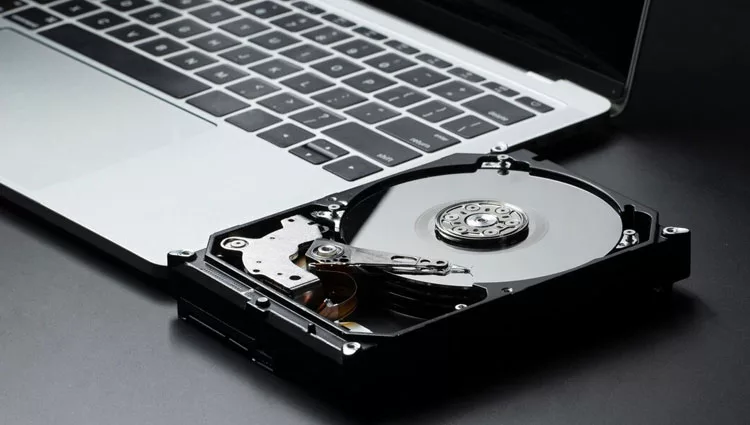If you’ve formatted your Macbook accidentally and have lost your precious data, you don’t have to lose hope. While formatting your Macbook usually means that you’ve lost all your data, in this guide, we’ll be helping you understand how to recover data from a formatted hard drive on Mac.
In this guide, we’ll outline steps to recover data from a formatted hard drive on Mac. Let’s get started.
Can You Recover Data from a Formatted Hard Drive?
Yes, you can recover data on a formatted hard drive on a Macbook. But your chances of data recovery depend on how you formatted the drive. The chances of you getting back your data decreases as you move the Security Options slider to the right. If you’re wondering why, then you need to understand what happens during disk formatting on a Mac.
During the formatting process, a file system, that determines how the data is stored and accessed is written to the drive. Based on where the Security Options slider is set, existing files on your hard disk are either simply marked as overwritten or overwritten with zeroes, and random data by the OS.
How to Recover Files from a Formatted Hard Disk on Your Mac?
1. Stellar Data Recovery for Mac
If your data is super important and you don’t mind spending a little money for recovery, then the first option on our list is the Stellar Mac Hard Drive Recovery.
Stellar Data Recovery tool for Mac is a powerful software that helps you recover lost or deleted files from either internal or external storage. It won’t cost you much, and it will help you get your data back without much hassle.
Here’s everything the Stellar Data Recovery for Mac tool can do:
- Recover lost documents, photos, videos, emails, audio files, and other type of data.
- Recover data from empty Trash, erased volume, and inaccessible drives.
- Recover data from encrypted APFS, Time Machine, and 4K drives.
- Compatible with M1, M2 & T2 chip-enabled Macs.
- Supports the latest macOS 14 Sonoma and Lower versions.
Here’s a step-by-step breakdown of how to recover files from a formatted hard drive on your Mac using Stellar Data Recovery:
- Purchase and install the software on your Mac.
- Open the software on your Mac.
- Choose the file type & drive. You can choose custom file types and the storage drive.
- On the bottom left side of your screen, you’ll see an option named “Deep Scan.” Click on it so it’s turned on.
- Preview the files the tool has recovered. Select the files you want to want to recover, then click on Recover.
2. Recover the Formatted Hard Drive on Your Mac Using Time Machine
Most Mac users don’t even know but their Mac has a built-in backup feature that saves your hard drive data automatically. The automatic backup saves your documents, photos, and personal diary. If you haven’t ever gone out of your way to change the settings and turn off automatic backup, it must be enabled.
If Time Machine was operating on your Mac when you formatted it, your data is probably saved automatically. Here are the steps to recover the data:
- Click on the Apple Logo on the upper-left corner of your screen. From the menu, click on System Preferences to proceed.
- Find Time Machine in System Preferences and open the app.
- The Slow Time Machine in the menu bar option at the bottom should be checked. Make sure the option is ticked on.
- Select Enter Time Machine from the menu bar. Once you open it, it will show all the previous backups.
- Find the files you want to recover and click on Restore.
3. Send Your Mac to a Professional Data Recovery Center
If you’ve tried the above methods and nothing seems to work as you want it to, then it would be better for you to take your Mac to a professional. Professional data recovery experts have the tools and expertise to help you get your data back.
Before you visit a data recovery center, you should know that they aren’t cheap and cost a lot. But if you’ve lost super important data, then visiting the professional data recovery center is your only option.
How to Format Your Mac Without Causing Data Loss
Now that you’ve learned how risky it can be to format your Mac without proper guidance, you should also learn the right way to do it. Formatting can fix some of the hard drive-related problems, but it can also cause you to lose precious data.
From now on, just make sure that you don’t format Macintosh HD. You should only format your Mac for specific purposes, such as:
- To get rid of a virus, which can’t be cleared out with an anti-virus software.
- Reinstall the operating system to fix boot errors or restore missing system files.
- Replace the damaged file system or Macintosh HD structures.
- Clear all data that you don’t want on your Mac.
Wrapping Up
Well, this is it. Now you know how to recover data from a formatted hard drive on Mac. If none of the DIY solutions work for you, then we suggest you visit a professional data recovery agent. Also, the next time you plan to format a device, keep the above mentioned tips in mind so you don’t end up losing your data.

